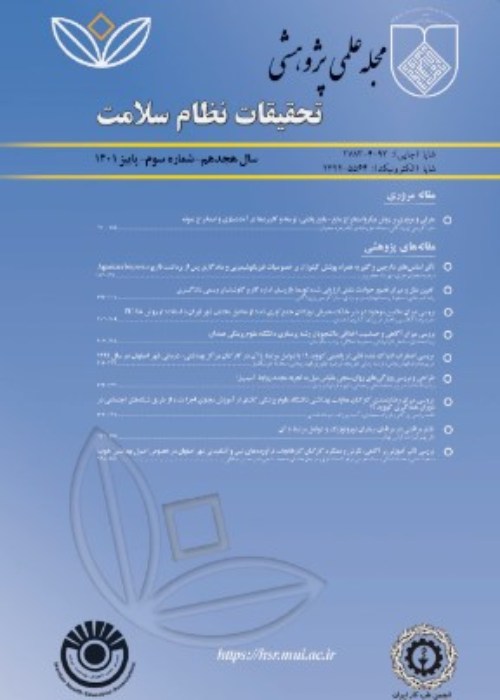Evaluation of Sera Hemocystein and Lipoprotein (a) levels in relation to other risk factors of cardiovascular diseases
Author(s):
Abstract:
Background
In addition to the known risk factors of cardiovascular diseases, many studies reported that there are some new risk factors such as hemocystein, lipoprotein (a), fibrinogen and factor VП affecting the morbidity and increasing the risk of disease. The current study was designed to evaluate such risk factors in relation to those previously established in a case-control study design. Methods
40 patients with heart disease among those admitted to Shahid Mustafa Khomeini Hospital in Ilam were randomly selected as case while 60 healthy people who had no sign of heart disease as the control group. A questionnaire including some demographic and clinical questions was completed for each individual, prior to blood sample to be taken after a written consent was taken from each patient. From each individual in case and control group 8 ml blood was taken and the sera were extracted. FBS, LDL, HDL, TG, cholesterol, lipoprotein (a) and hemocystein all were measured using a BT 3000 Auto Analyser in Ebne Sina lab in Ilam.Findings
The mean age of case and control groups was 49.48±10.37 and 42.25±13.03 years, respectively. The mean sera hemocystein level was 13.51±3 and 13.42±3 in case and control groups, respectively with no significant difference. Individuals in case group had increased their sera levels of LDL, TG, and cholesterol much more than those for control group. The sera hemocystein level also increased with increase of age in both groups with significant correlation for the case group (p<0.006).Conclusion
Although the Hemocystein level increased with increase of age which can be interpreted as a risk of increasing the possibility of cardiovascular disease, the correlation of haemocystein in case and control groups was not significant. There was a significant correlation between HDL and hemocystein but the results showed that hemocystein is not as effective as other risk factors such as LDL, TG and cholesterol in prevalence and severity of disease. It is suggested that some more studies with broader spectrum in sample size and risk factors be designed in order to evaluate such a correlation in more details.Language:
Persian
Published:
Journal of Health System Research, Volume:6 Issue: 2, 2010
Page:
326
magiran.com/p838242
دانلود و مطالعه متن این مقاله با یکی از روشهای زیر امکان پذیر است:
اشتراک شخصی
با عضویت و پرداخت آنلاین حق اشتراک یکساله به مبلغ 1,390,000ريال میتوانید 70 عنوان مطلب دانلود کنید!
اشتراک سازمانی
به کتابخانه دانشگاه یا محل کار خود پیشنهاد کنید تا اشتراک سازمانی این پایگاه را برای دسترسی نامحدود همه کاربران به متن مطالب تهیه نمایند!
توجه!
- حق عضویت دریافتی صرف حمایت از نشریات عضو و نگهداری، تکمیل و توسعه مگیران میشود.
- پرداخت حق اشتراک و دانلود مقالات اجازه بازنشر آن در سایر رسانههای چاپی و دیجیتال را به کاربر نمیدهد.
In order to view content subscription is required
Personal subscription
Subscribe magiran.com for 70 € euros via PayPal and download 70 articles during a year.
Organization subscription
Please contact us to subscribe your university or library for unlimited access!


